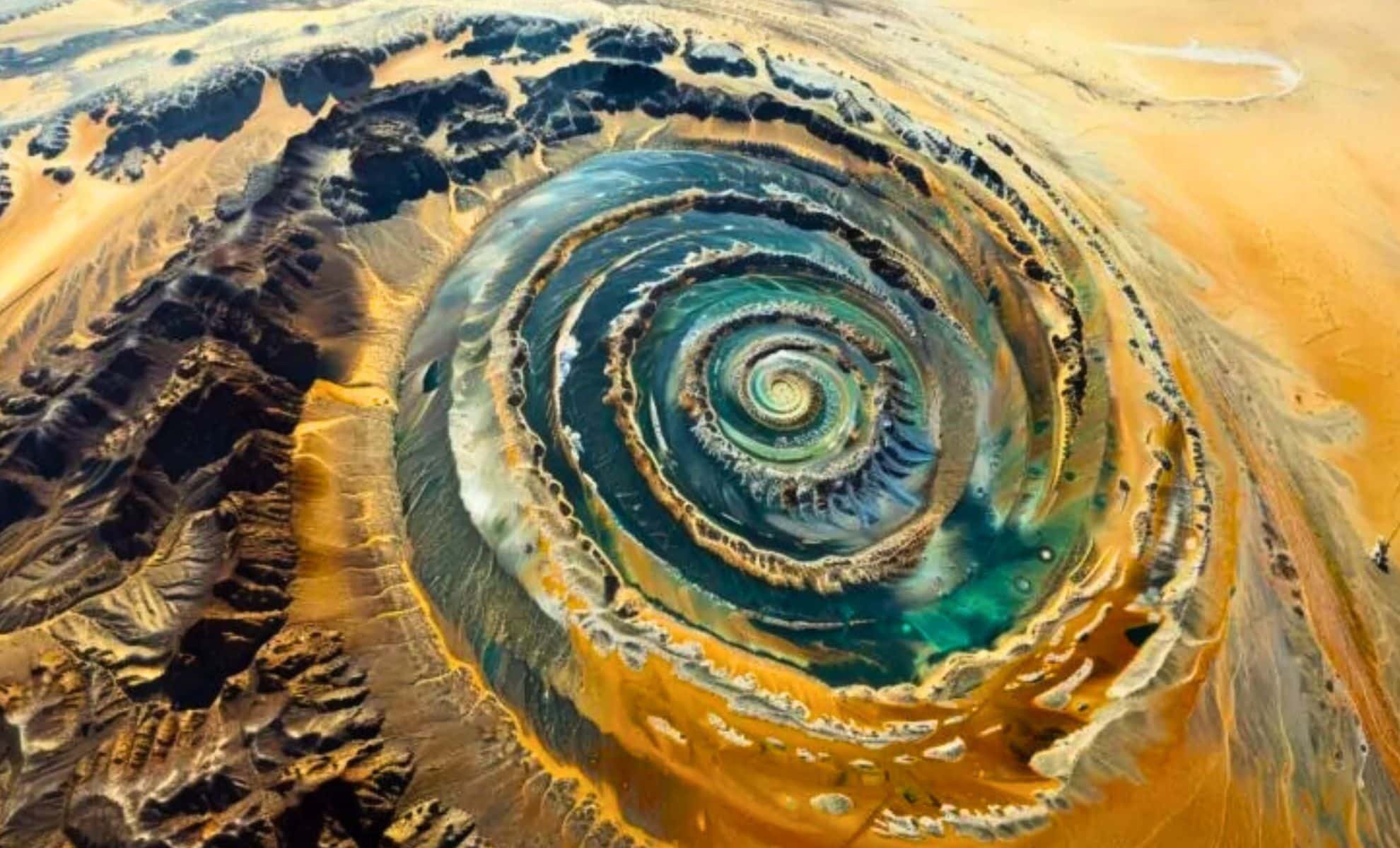
Nestled within the immense stretch of the Sahara Desert is a remarkable circular feature that spans almost 50 kilometers: the captivating Richat Structure, often referred to as the Eye of Africa.
This stunning geological formation has piqued the curiosity of scientists for many years and serves as a visual marker for astronauts observing from outer space. Its nearly flawless concentric circles give it an otherworldly charm, sparking various theories regarding its origin.
Over the years, numerous hypotheses have been proposed to decipher the mystery behind this landmark, ranging from impacts by meteorites to volcanic activity. However, until recently, none provided a complete explanation for its distinctive design. Now, a team of French and Mauritanian researchers has revealed that the story of this structure dates back hundreds of millions of years.
A Stunning Feature Visible from Space
The Eye of Africa is one of the most identifiable natural landmarks on our planet. Situated in Mauritania, its enormous and symmetrical rings stand out dramatically against the endless dunes of the Sahara, making it visible even from space. Astronauts aboard the International Space Station (ISS) frequently utilize it as a reference point for navigation.
Over the years, its unusual shape has inspired countless theories. Some speculate it resulted from a catastrophic natural event, while others have linked it to the mythical lost city of Atlantis. Yet, the reality, although less fantastical, is equally astonishing and reveals a narrative of geological forces at play over eons.
Unraveling the Geological Enigma
Initially, researchers believed the Richat Structure was the result of a meteorite impact due to its circular form. However, the lack of impact-related materials, such as shocked quartz or molten rock, undermined that theory. A subsequent idea proposed it was a collapsed volcanic caldera, but the absence of volcanic rock dismissed this explanation as well.
Recent research published in ScienceDirect has illuminated a more intricate process behind its formation. Rather than a dramatic, sudden event, the Eye of Africa gradually emerged from a complex interplay of magma, geological uplift, and erosion.

The Gradual Formation of a Natural Marvel
To comprehend the origins of the Richat Structure, we must travel back nearly 100 million years to the disintegration of the supercontinent Pangaea. As tectonic forces reshaped the Earth, magma from deep within pushed upwards, creating a massive dome of sedimentary rock.
In contrast to a typical volcano, this magma never erupted. Instead, over time, natural processes such as wind and water erosion sculpted the dome, gradually removing layers of rock at varying rates.
The outcome? The striking, ringed formation that we witness today. More resilient rock layers faced erosion longer than their softer counterparts, leading to the unique concentric circles that define the Eye of Africa.
A Glimpse into Earth’s Ancient History
Beyond its stunning look, the Richat Structure serves as a geological time capsule, preserving a record that goes back billions of years. Some of its rocks are approximately 2.5 billion years old, providing invaluable insights into the Earth’s primordial crust. This formation features a fascinating array of quartzite, sandstone, and volcanic deposits, with each layer revealing fragments of the planet’s environmental history.
Research suggests that millions of years ago, this now-arid landscape may have once hosted lakes and rivers, possibly nurturing early forms of life. Today, while it appears as a vast desert, remnants of ancient water formations indicate a time when this region was much more hospitable.
Dispelling the Atlantis Legend
Due to its striking similarity to Plato’s portrayal of Atlantis, the Richat Structure has often been associated with the fabled lost city. Some theorists argue that its circular design and location in North Africa align with historical accounts of this mythical civilization.
However, scientific evidence firmly refutes this idea. The structure is entirely natural, showing no indicators of human construction or artificial design. While it may inspire imaginative narratives, the Eye of Africa stands as a monument to Earth’s geological processes, devoid of any links to an ancient mythical world.
A Geological Treasure Worth Conservation
Despite its isolated location, the Eye of Africa continues to attract geologists, researchers, and adventurers keen to experience its magnificent allure. Its scientific relevance and breathtaking beauty make it one of the planet’s most extraordinary natural landmarks.
As climate change and human activities pose growing threats to the Earth’s delicate ecosystems, safeguarding geological wonders like the Richat Structure is becoming increasingly essential. More than just a landmark, it is a testament to the Earth’s dynamic history—an enduring reminder of the powerful forces that shape our world.









